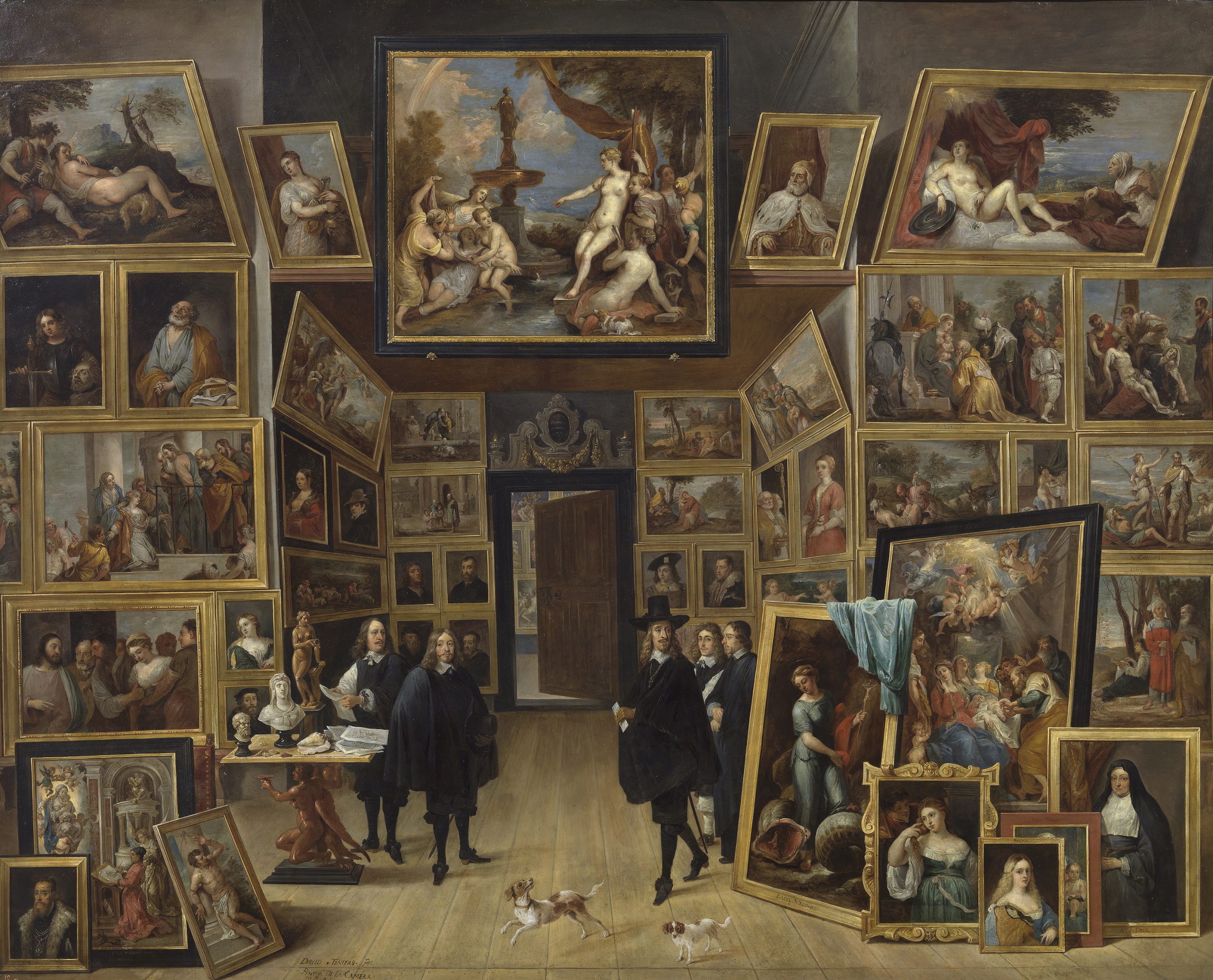
The number one movie at the box office in 1980 was the second “Star Wars” movie, “The Empire Strikes Back.” The number two movie was a comedy about three female office workers. It became a cultural touchstone, along with its hit song, and inspired an unsuccessful television series and a successful Broadway musical. It was “9 to 5,” starring Jane Fonda (who also produced), Lily Tomlin, and, in her first screen appearance, Dolly Parton.
A new documentary, “Still Working 9 to 5” explores the film’s backstory, the casting, writing, and costumes, as well as studio concerns that a movie with three female leads and an office setting would not appeal to ticket-buyers. It also covers the activist organization pursuing workplace equity that gave the film its title, and the continuing conversation and (limited) progress on the issues it raises. In an interview, directors Camille Hardman and Gary Lane, whose twin brother also worked on the film, talked about the film’s continuing popularity and influence and the frustration in getting the documentary to audiences.
When did you first see the movie “9 to 5,” what were the circumstances, and what did you think of it?
Gary Lane: We were around 10 when we first saw the film. It was funny to us, kidnapping the boss, but years later it took on a whole new meaning. The film was truly about working women and the hard issues they were dealing with at the time. That’s the only way middle America could see the message behind the laughs. Hiding the medicine in the candy.
Camille Hardman: In Australia we had a movie of the week that would screen on a Sunday night. I was only eight at the time, and I was supposed to be in bed, but sometimes I would sit on the steps and sneakily watch the film behind my parents. One Sunday this film was “9 to 5.” I remember all the fantasy scenes. I didn’t quite understand the context, but I was so taken with Dolly, who was so different from anyone I had ever seen or met in Australia.
Do you have a favorite scene?
GL: For us it would be “rooster to a hen.” Being southern boys from North Carolina, we always loved Dolly.
CH: Oooo, I have so many. For me it’s the scene where Dabney is using the football analogy with Lily and Jane trying not to laugh at his buffoonery. The acting and comic timing was amazing.
Why was it important to make the film a comedy, unlike other “issue” films Jane Fonda made: “Coming Home” and “The China Syndrome”?
CH: Essentially Bruce and Jane knew that if they wanted to really initiate change, they had to attract a wide audience to a film. They also did not want to preach to the converted and wanted men to be a part of the conversation and hopefully see themselves on screen. They knew men would not attend a “women’s issues” film, but if they packaged the film as a broad comedy, they would equally have both men and women attend which would really be able to generate a conversation in the workplace.
GL: They felt strongly about shining a light on the issues activist Karen Nussbaum had shared with her about office politics at the time. Equal pay, equal job advancement, childcare, and sexual harassment. But comedy was the only way to get more eyes to see the issues. Camille and I used the same method with our documentary. We bring the audience in with the “9 to 5” original cast reunion and the new exclusive, haunting “9 to 5” duet performed live by Dolly and Kelly Clarkson in our end credits. We have Oscar winners Rita Moreno on the “9 to 5” TV series and Allison Janney on the “9 to 5” musical. But when we get them in the seats, we show them what’s really not changed for working women over 44 years later. It’s insanity.

I was so glad that you included the superb costume designs in the film. How did Ann Roth’s wardrobe help to define the characters, both in their “real” and “fantasy” personas?
GL: Absolutely! Two-time Oscar winner Ann Roth knew the women needed to appear smart, not glamorous, in this film. She did this in so many subtle ways in the film. I mean “We’re gonna need a separate locker for the hat.” Brilliant!
CH: There was a lot of consideration taken by Ann to explore the greater context of each character and how each character represented archetypes of woman in society—the working woman, the recent divorcee who has never worked, and the perceived office vixen. We also juxtaposed that with their inner character, which was displayed in each fantasy sequence. Ann also used a lot of red, white, and blue in her costumes to show these were working women who were valued in America.
Do you believe that the film changed the perception or the conversation around workplace issues? Around feminism?
GL: In some ways yes. In our film, Karen Nussbaum shared that things did change as far as women stepping into leadership roles, and other smaller steps of improvement by the end of the eighties. But as we all know, not enough has changed.
CH: I think many women and organizations used the film as an example of what happens when there is solidarity of women in the workplace. When women come together, greater change can happen. The film also allowed the 9 to 5, National Association of Working Women organization of working women to flourish. They were able to use the film in their grassroots campaign and tours to create new chapters all around the US, discussing the issues in the film such as: equal pay, job advancement, sexual harassment, and maternity leave.
We talk today a lot about “representation” mattering. We had serious and comic portrayals of office life in other movies, but was this focus on female office workers a first?
GL: Dolly, Lily, and Jane were first on so many levels. Until this film, studios did not believe women could carry a picture to success at the box office without a male star. Women office workers (well over 20 million) in 1980 when the film was released, went in droves to the theaters. They knew finally their struggles were being heard and shared in a major way.
CH: There were sporadic films about women at work in the 1930s, such as “His Girl Friday,” but during the ’50s and ’60s, most films resorted to women playing housewives or women waiting to get married. This was the first time a film had three female leads. All were strong women representing three very different working women archetypes coming to terms with inequalities in the office, demanding respect for the work that they were doing, and dignity in the workplace.
The producer talks about having men in the audience identify with the women characters. How does the film accomplish that?
CH: I think all human nature can recognize human indignities and the inequality in class and caste structures. The film was very good at showcasing the interoffice class system which most men in a subordinate position has also experienced, such as bosses taking recognition for other people’s work. This was very relatable to people of all genders which in turn made men become empathetic with the female characters when more gender based actions occurred, such as sexual harassment.
GL: Because I truly believe by showing Mr. Hart, aka Dabney Coleman, bosses everywhere said, “Is that me? Do I behave like that to my office workers?” It shined a light on bad boss behavior. The film also, as Rita Moreno shared, had a message of “Stand up for yourself and speak out against it.”
It is quite a surprise to see Harvey Weinstein as a proud producer of the Broadway musical! What does including him in the documentary mean to the audience?
GL: Well Harvey is our mic drop moment for sure. Just imagine knowing Harvey Weinstein, the biggest sexist, egotistical, lying, hypocritical, bigot was behind bringing the show to Broadway, knowing full well what he was doing behind closed doors at that time. Needless to say, in 2019 when the “9 to 5” musical opened in London’s West End, it was received in a much more supportive and relatable environment. Audiences could relate to the content. It has since toured Australia and China of all places. Maybe it starts conversations and opens minds. Dolly calls it the original #Metoo musical.

Why was it important to include the founders of the 9 to 5 activist group and Lilly Ledbetter?
CH: The film would not have been conceived if the 9to5 Organization of Working Women was not established. Due to the friendship between co-founder Karen Nussbaum and Jane Fonda, the basic idea came for the film was born from a conversations between Jane and Karen, who told Jane about the true life experiences and indignities secretaries were facing on a daily basis in the workplace from their bosses and male colleagues. The fantasy scenes were based on what many women wanted to do to their bosses due to want they had to endure.
GL: I have to say we had two of the best editors in the business: Elisa Bonora and Oreet Rees. We needed to follow the “9 to 5” timeline over 40 years with the working women’s movement timeline. It’s not easy to span a documentary over that many decades. Bruce Gilbert gave us props for doing it in a powerful way. For example, in 1982 when the TV series was being filmed in Hollywood, we had activist Zoe Nicholson fasting on the Congress steps in Springfield, Illinois, holding a 40-day fast to raise awareness leading up to the state vote on the ERA ratification. And in 2009, when the 9 to 5 musical was opening on Broadway, we have Lilly Ledbetter standing in the White House with President Obama signing the Lilly Ledbetter fair pay act. I have to say, meeting Zoe and Lilly and all of the other activists in the film have completely changed our outlook on life and turned my brother and myself into long-term advocates for women’s rights.
What would a “9 to 5” update today include?
GL: As Jane says in the film, gig work, contract workers, not ever seeing the boss in person. So many issues could have light shone on them like in the first film. However, the reality we are learning is Hollywood is a boys’ club. Streamers have acquisition teams, mostly male, who are targeting younger and younger demographics. So, a film like ours that swept the film festival circuit, winning 10 Best Documentary awards and a Critics Choice Doc Award nomination for Best Historical Documentary is still having trouble securing a wide release. Would that be true for the “9 to 5” sequel? We’re not sure, but we’re learning pretty quick, even hearing from women film critics who deal with similar issues as well. Women’s empowerment content doesn’t always get a fair shake in today’s Hollywood and the power the streamers currently hold.
CH: We have been told by numerous male buyers at streamers that these issues are not affecting young women anymore. They say workplace inequality does not exist anymore. We would show examples of how the evolving workplace has just as many instances of workplace inequality, sexual harassment, lack of job advancement, and certainly no sign of maternity leave for the majority of women workers. Some of these issues may have different guises, but they are still bubbling under the surface.
What do you think has been the film’s most significant impact?
GL: Just the fandom of “9 to 5” has held people’s attention for over four decades. That helps us get them to watch our film. They still get all the fun, making of, and set stories from the original stars! We have over 1000 pieces of archival clips and photos! It’s a “9 to 5” fan’s 90-minute dream. But you also learn the four key issues the 1980 film tried to fix for working women are still not resolved. Sexual harassment still happens and women are hundreds of years away from equal pay. Universal childcare is not available on a national level. So many women were forced to quit work during the pandemic. As Zoe Nicholson says, the ERA still has not passed; women are not protected in the US Constitution. If they were, Roe could never have been overturned. Again as Zoe says in the doc, “it’s maddening.”
CH: I think exploring the concept of solidarity between women and the need for multigenerational discussions. We have seen many mothers bring their daughters to screenings and they have a newfound understanding of each other. Daughters understand what mothers went through, and it becomes a platform for daughters to discuss their experiences and ask advice on how to deal with certain scenarios that arise. Also, we have found that the film gives women courage to discuss issues with their other female colleagues. Because if something is happening to them, there is a good chance the same thing is happening to your female colleague.
What do you hope people will learn from this documentary?
GL: Change is still needed for working men and women in this country. A movie that made a mark 44 years ago is still important and relevant today. Women like Dolly Parton, Lily Tomlin, Jane Fonda, and Rita Moreno, who still have careers well in their 70s, 80s, and 90s are still relevant and defy ageism in Hollywood every day. Women like Zoe Nicholson, Lilly Ledbetter, Karen Nussbaum, and Ellen Cassedy, who have been fighting 50 and 60 years for women against sexism and women’s equality in pay and every other avenue deserve to see it happen in their lifetimes. I believe strongly our film has the power to get this message out to the masses, and I will never give up on getting a wide release. If that means calling out Hollywood and streamers for pushing back against strong women’s content, bring it on.
CH: Stay vigilant and have open discussion. Know that you can make a difference and vote for the ratification of the ERA.




